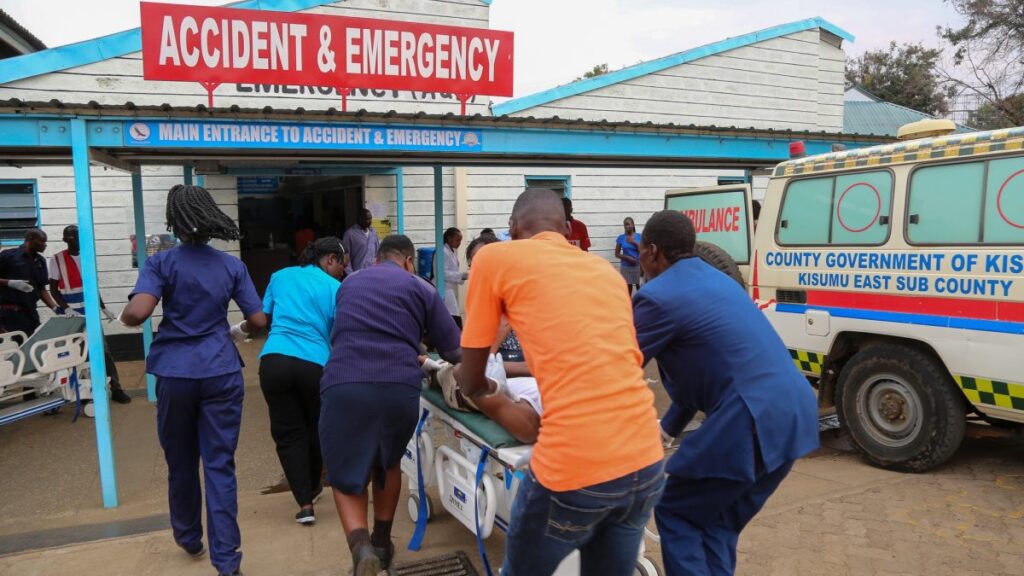An air of grief hung heavy outside the Jaramogi Oginga Odinga Teaching and Referral Hospital (JOOTRH) morgue on Friday as families from Koguta village, Nyakach, gathered to collect the bodies of loved ones killed in the Kisumu–Kakamega highway tragedy.
The viewing, held just beyond the morgue gates, was marked by raw, heart-wrenching scenes. Relatives clung to one another for strength as names were called out one by one. Each emergence of a coffin brought fresh cries from the crowd, the sound of anguish echoing across the compound.
Mothers beat their chests in despair. Elderly men stood still, tears streaming silently down weathered faces. Shaky hands reached for the polished wood of the caskets; others knelt beside them, whispering hurried prayers and goodbyes through sobs.
The 22 victims among 26 people who perished in the crash were all from Koguta village. Twenty-six others survived and are receiving treatment at JOOTRH. Many of the deceased were returning home from a funeral in Nyahera when tragedy struck at the Coptic roundabout, in what has now been described as one of the region’s deadliest road accidents in recent years.
For many families, the tragedy cut through multiple branches of the same family trees. The loss has left Nyakach reeling, its collective sorrow compounded by the fact that so many victims were closely connected through kinship and friendship.
From the morgue, the bodies were transported to their homes for night vigils, a tradition meant to give families and neighbors a final opportunity to mourn together. On Saturday morning, they will be brought to Naki Primary School for a joint funeral service. The event is expected to draw hundreds in what could be one of the heaviest and most somber gatherings in Nyakach’s history.
As the community prepares for the final farewells, the crash serves as a grim reminder of the fragility of life and the urgent need for road safety measures to prevent such devastating losses in the future

